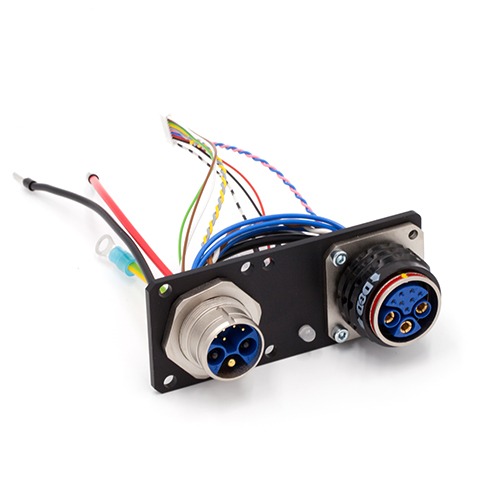Strands

What are stranded wires?
In electrical engineering , a stranded wire is an electrical conductor consisting of thin individual wires and is therefore easily bendable. Copper is predominantly used as the conductor material. Stranded wires can be divided into flexible and highly flexible stranded wires.
A stranded wire consists of individual, sometimes up to hundreds of thin copper wires. For example, a 1.5mm² H07V-K stranded wire consists of 30 x 0.25mm individual strands that are twisted into a bundle. A plastic sheath holds the bundle of individual wires together and also serves as insulation for the copper strand.
The structure of a stranded wire is defined by standards. One of these standards is IEC 60228/VDE 0295. The plastic sheath consists of different materials depending on the application. For a H07V-K stranded wire, polyvinyl chloride (PVC) is used as standard. Depending on the cross-section, the finished stranded wire can then be used for both signal and power transmission.
What are the advantages of stranded conductors over solid wire conductors?
Compared to a conventional copper wire, stranded wires have the advantage of being much more flexible and pliable. The reason for this is their composition of many fine wires. Compared to solid wire conductors, the risk of conductor breakage is much lower with stranded conductors. Such a break can occur, for example, due to mechanical stresses caused by vibration or bending.
Copper stranded wires are therefore preferably used for the electrical connection of moving components, for example in vibrating areas. These include doors or trunk lids, vehicles or robots. In addition, there are other areas of application for stranded wires.
Where are stranded wires used?
Stranded wires are used as electrical connections in vehicles, in mechanical engineering, in automatic machines and in Medical Technology for respirators or MRI equipment. Stranded wires are also used in control cabinet wiring and in renewable energies.
We will be happy to advise you on this and equip you with individual stranded wire variants. All copper wires are available in the desired length in meters and in various colors.
Production of assembled strands with semi- or fully automated processes
The assembly of stranded wires is considered the simplest form of cable assembly. Assembling is the technical term for processing the ends of a stranded wire that has been cut to length. The harnessing usually takes place in the following steps:
- Removing the insulation of the stranded wire ends
- soldering or crimping of electrical contacts to the stranded wire ends on one or both sides
- Screwing into screw terminals
Other connection techniques for electrical contacts at stranded wire ends include crimping, insulation displacement, screw clamping, ultrasonic welding and dip tinning.
Depending on the number of pieces, these processing steps can be carried out manually with manual tongs as well as semi-automatically or fully automatically.
The CiS Group assembles customer-specific, high-quality products such as stranded wires, cables and cable harnesses in compliance with standards and legal guidelines. Our experts will be happy to answer any questions you may have.